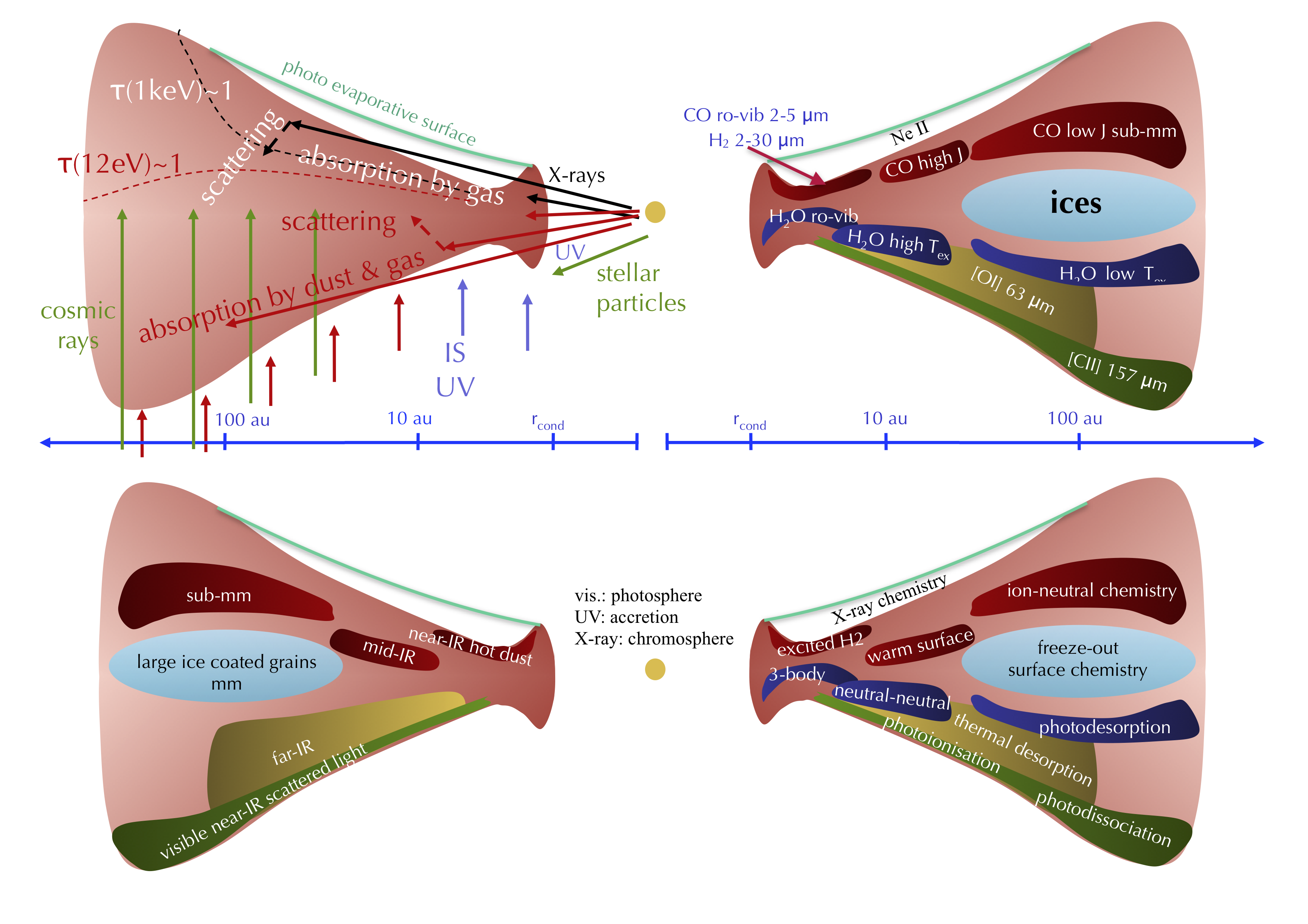
ProDiMo's goal is to model the chemistry and heating/cooling balance in the entire disk. From the inner rim, where the dust is at sublimation temperature ~1500K out to several 100 au in radius, where the dust can be as cold as (5-10)K. Gas temperatures are similar to the dust temperatures in the midplane, but can be as high as 30000K in the uppermost teneous layers close to the star which are directly hit by stellar UV and X-rays. The densities can vary from interstellar values up to about 1016 particles/cm3.
ProDiMo uses detailed 2D continuum radiative transfer with scattering to calculate the local UV photon fluxes. Optionally, X-ray radiative transfer with Compton scattering can be used. Energetic Stellar Particles (SEPs) can be considered as well. Interstellar irradiation with UV-photons and cosmic rays is included by default, assuming isotropic irradiation of the whole disk.
The upper left figure shows how the irradiation from the star and the interstellar medium (IS) penetrates into the disk. The upper right figure shows which line observations probe which parts of the disk. The lower left figure shows which continuum observations probe which parts of the disk. The lower right figure shows which kind of chemical processes are most relevant in the various disk regions.
